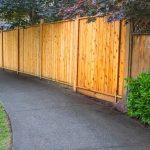Among the various smart appliances available, smart plugs stand out for their ability to transform traditional devices into smart ones without necessitating a complete overhaul of existing electronics. When looking to automate your home, smart plugs present a practical entry point, offering users enhanced control and the ability to save on utility bills.
What Are Smart Plugs?
Smart plugs are compact devices that fit between your electrical outlet and the appliance you want to control. By using your home’s Wi-Fi network, these plugs can automate a variety of everyday objects—from lamps to coffee makers—through a simple, user-friendly interface typically accessible via smartphone apps. The core function of a smart plug is to enable you to turn devices on and off remotely, schedule operations, and monitor energy usage.
Benefits of Using Smart Plugs
Convenience and Control: At their essence, smart plugs offer a heightened level of convenience by allowing users to control appliances from anywhere. Whether you’re at work or on vacation, a simple tap on your smartphone ensures that your devices are managed effortlessly. They effectively eliminate the need to manually plug and unplug devices, making your day-to-day interactions more seamless.
Energy Efficiency: Smart plugs can help save money by reducing energy consumption. Many models provide insights into the energy usage of connected devices. By identifying power-hungry electronics and optimizing their operation times, smart plugs can significantly decrease your electricity bill. Smart plugs equipped with an auto-off feature ensure devices do not remain on longer than necessary.
Improved Security: Home automation not only makes life more efficient but also enhances security. Smart plugs contribute by simulating human presence when you are away. By scheduling lights and electronics to turn on and off at random intervals, you can deter potential intruders and make your home seem occupied.
Integration with Smart Home Ecosystems: Most smart plugs available today are compatible with major smart home assistants like Amazon Alexa, Google Assistant, and Apple HomeKit. This means you can operate them via voice commands and integrate them into routines with other smart devices, amplifying their utility.
Factors to Consider When Buying Smart Plugs
When choosing smart plugs, several factors merit consideration to ensure you purchase a product that best suits your home’s needs.
Compatibility: Ensure that the smart plug is compatible with your preferred smart home ecosystem, be it Amazon Alexa, Google Assistant, or Apple HomeKit. This allows for a seamless integration process and unified control interface across devices.
Wi-Fi Connectivity: Opt for smart plugs that support 2.4 GHz bands, as this frequency is widespread and generally provides a stable connection. Some advanced models also support dual-band connectivity, accommodating both 2.4 GHz and 5 GHz networks for enhanced performance.
Size and Design: Consider the size and design of the smart plug, particularly if you plan to use them in clustered power strips or in places with limited space. A compact design ensures that adjacent outlets are not obstructed.
Energy Monitoring: For the energy-conscious consumer, a smart plug equipped with monitoring features can provide invaluable data on energy consumption, pinpointing appliances or behaviors that result in energy waste.
Scheduling and Automation Capabilities: Review the app’s scheduling options to ensure they align with your routines. Some apps offer the ability to create detailed schedules, while others might include a vacation mode or sunrise/sunset triggers for more dynamic automation.
Price Point: While smart plugs are relatively affordable, prices can vary. Typically, more expensive models offer additional features like energy monitoring or advanced security protocols. Evaluate what features are most important to you and balance those against your budget.
Popular Smart Plug Models
Several smart plug models stand out in the market due to their reliability, features, and user satisfaction.
- TP-Link Kasa Smart Wi-Fi Plug Mini: Known for its compact design, this model is ideal for those with multiple devices plugged into a single outlet. It offers scheduling and away mode functionalities, is compatible with Alexa and Google Assistant, and provides voice control options.
- Wemo Insight Smart Plug: This smart plug stands out due to its energy monitoring capabilities. Users can track energy consumption directly from the app, making it easy to identify high-energy devices. It supports voice controls and integrates with all major smart home ecosystems.
- Amazon Smart Plug: Designed specifically for Alexa, the Amazon Smart Plug offers simple setup and voice control. While it lacks certain advanced features like energy monitoring, its tight integration with Alexa-centric households makes it a convenient option.
- Meross Smart Wi-Fi Plug Mini: With its affordability and wide compatibility with Alexa, Google Assistant, and Apple HomeKit, this smart plug is a versatile option. It supports scheduling, timers, and voice commands, providing excellent value for its price.
- Gosund Smart Plug: An economical choice, the Gosund Smart Plug is easy to use, offering scheduling features and voice control compatibility with Alexa and Google Assistant. Its simple setup process makes it a great entry-level option for home automation beginners.
Installation and Setup
Installing a smart plug is relatively straightforward and can usually be completed in a matter of minutes. Here’s a general guideline on how to set them up:
1. Plug in the Device: Start by plugging the smart plug into an outlet. Make sure it is within range of your Wi-Fi network.
2. Download the App: Each smart plug will have a corresponding app that needs to be downloaded onto your smartphone. Ensure your phone is connected to your home Wi-Fi and follow the app’s instructions to connect the plug to your network.
3. Pairing and Configuration: After connecting to your network, you may need to pair the smart plug with your preferred smart home ecosystem, such as Amazon Alexa, Google Assistant, or Apple HomeKit. This involves configuring your smart home app to recognize and control the new device.
4. Automation and Scheduling: Use the app to create schedules, set timers, or program automations according to your requirements. Spend time exploring the app features to fully leverage the smart plug’s capabilities.
Practical Applications
Manage Lighting: One of the simplest and most effective uses of smart plugs is in lighting control. By connecting lamps to smart plugs, you can regulate lighting schedules that align with your daily routine or set them to activate in anticipation of sunset for added convenience.
Appliance Automation: Smart plugs can also automate appliances such as fans, coffee makers, or heaters. For instance, you can set the coffee maker to start brewing as soon as you wake up, or switch off a heater once it reaches an appointed temperature.
Cutting Vampire Power: Many electronics consume power even when not in active use, a phenomenon known as vampire power. Smart plugs can cut power to these devices when they are not required, effectively reducing electricity wastage.
Improve Sleep Patterns: By automating bedroom electronics, such as lamps or white noise machines, smart plugs can help establish a consistent bedtime routine, enhancing sleep quality.
By incorporating smart plugs into your home automation strategy, you carve a path toward a smarter, more efficient living environment. The adaptability and convenience offered by smart plugs make them an essential component of the modern smart home. Taking a considered approach to the selection process ensures that you maximize the benefits of this innovative technology, saving both time and energy while enhancing your living space.



